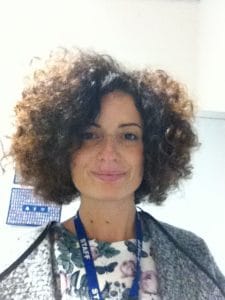2017 AFMLTA Conference Report
by Nalini Demma
Languages – the Keys of the Global Connection. I think no other title was more appropriate for the 21st AFMLTA conference as I had the pleasure to attend together with delegates from different countries at Bond University on the Gold Coast.
To open the conference was Professor John Hajek who describes Second Language Teachers as heroes and champions.
In fact, Second Language education in multicultural Australia still faces many challenges such as the predominance of a “monolingual mindset” in English speakers, who unfortunately are not exposed enough to other languages in their broadcast culture.
Professor Hajek reminded us how it is important to foster a positive message around languages by demanding high quality achievement, promoting the benefits, generating desire and opportunities and increasing research around this. A good starting point might be to not use the term “foreign language” which may have a negative connotation. Languages are the keys to promoting social inclusion and a greater sense of community.
In addition, according to the AFMLTA President, the number of students studying Aboriginal Languages should increase in our education system and plurilinguism should be recognized. How do we do that? That was her final question. Surely, according to the members of the panel, a stronger national collaboration is needed to increase access, choice and continuity for language learners’.
As professor Liz Ellis reminded us, if we look at the AFMTA standards, to teach a language means also to teach value and respect for cultures. She conducted an interesting study on language teacher identity that shows how we should avoid labels as ‘native’ or ‘non-native speaker’. Language teachers are usually plurilinguals and it is important for them to reflect on their own language lives, it means their relationship not only to the language(s) they teach, but also to other languages that may figure in their history.
Languages teacher identity suggests that teachers experiences of learning, using and teaching languages are foundational to the informing of their identities, and to their conceptions of teaching practice.
The conference explored many topics and I definitely found the presentation by Professor Nina Spada from Canada very interesting, the relationship between the attention to the language form and the opportunities for communicative meaning-based interaction. At this stage, research is not able to state if we should keep them separate or find ways for integration.
As a teacher, I constantly look for the right strategy to balance both, attention to language form and communicative instruction in my class.
“Task based learning” that focuses on the use of authentic language and asking students to do meaningful tasks using the target language could be a new strategy to try. Student are forced to process linguistic structures through games and activities and traditional grammar explanation can be integrated straight after.
I think another big common point of the conference was that we need to bring languages outside the classroom as much as possible, create opportunities to communicate with the target language and use the language to make connections between subjects. CLIL, Immersion program and Interdisciplinary approaches are certainly growing and a lot of presenters show their benefits and their challenges.
I had the pleasure during the conference to visit Robina High School, which is a perfect example of a dynamic language space. Students are constantly brought outside the classroom and involved in activities where the target language is always welcome. Every excursion is an opportunity to use the target language, like a treasure hunt at the commercial centre to revise directions in Japanese.
Parents and teachers from other departments are constantly invited to class events (like parties and a fashion parade) and competitions. The students have the chance to teach them something in the target language.
Bringing the students outside the classroom is not possible all the time but luckily connections with the world can be made thanks to technology.
In her workshop, Kati Varela from Sydney has showed how we can connect our students with other students in other countries using the example of Google Communities or Edmodo. Students can communicate in both languages (target language and English), correct each other’s mistakes, compare likes and dislikes, share videos and emails. Every class could have a partner class, even in the other side of the world. Websites like Epal or Students of the Word or Skolinks can be used to find teachers to collaborate with.
I did something similar with my classes last year (Global classroom project) and I had a lot of success.
Thus, the conference was a great opportunity to share and learn new ideas. Willeton SHS from Perth shared their way of assessing students in the middle school. Students do just 5 assessment every semester, writing and speaking task are combined and are often based on a group activity twice a year and the students sit a Listening/Reading and Writing test and this gives them the opportunity to learn the construction of the WACE exam.
To conclude the conference was a wonderful opportunity to work with teachers who share the same aim of fostering the idea that languages are indispensable in our society. Our society needs to be multilingual to grow.
About Nalini Demma
Italian Teacher – Newman College

Nalini Demma is a passionate teacher of Italian at Newman College (Secondary), Perth. She moved to WA in 2012 after completing a Master Degree in Modern Philology in Catania (Italy). She taught in Primary Education for two years and in 2015 she completed the Diploma of Education at Edith Cowan University in Perth, WA. Since 2016 she has worked at Newman College where she coordinates the WAATI/Intercultural student exchange program.

Leave a Reply